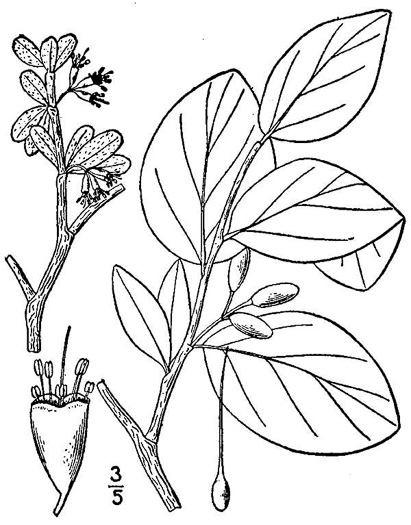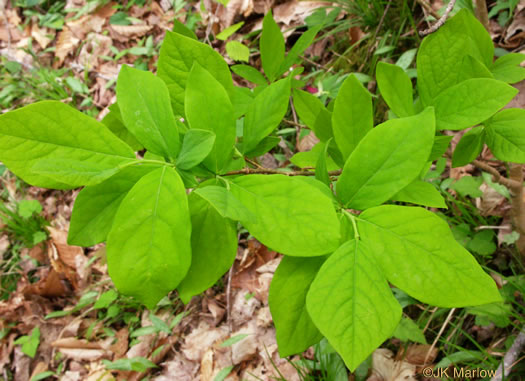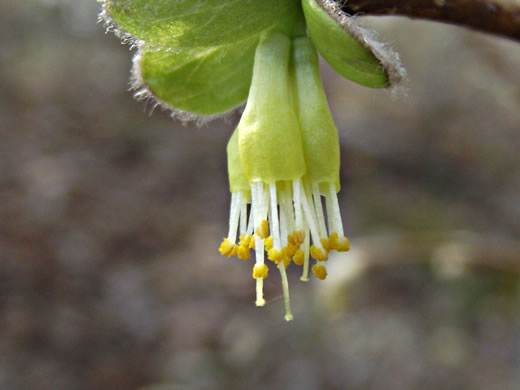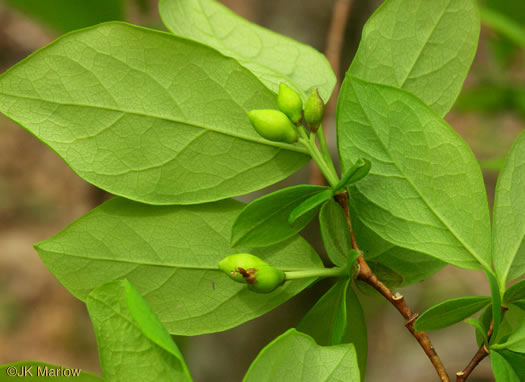Hovering over an image will enlarge it and point out features (works better on desktop than on mobile).
![]() A camera indicates there are pictures.
A camera indicates there are pictures.
![]() A speaker indicates that a botanical name is pronounced.
A speaker indicates that a botanical name is pronounced.
![]() A plus sign after a Latin name indicates that the species is further divided into varieties or subspecies.
A plus sign after a Latin name indicates that the species is further divided into varieties or subspecies.
Most habitat and range descriptions were obtained from Weakley's Flora.
Your search found 2 taxa in the family Thymelaeaceae, Mezereum family, as understood by Vascular Flora of the Carolinas.

![]()
![]() Common Name:
Eastern Leatherwood, Leatherbark, Wicopee, Rope-bark
Common Name:
Eastern Leatherwood, Leatherbark, Wicopee, Rope-bark
Weakley's Flora: (4/24/22) Dirca palustris FAMILY: Thymelaeaceae
SYNONYMOUS WITH PLANTS National Database: Dirca palustris FAMILY: Thymelaeaceae
SYNONYMOUS WITH Vascular Flora of the Carolinas (Radford, Ahles, & Bell, 1968): Dirca palustris 133-01-001 FAMILY: Thymelaeaceae
Habitat: Very rich forests, on slopes or bottomlands, limited to calcareous or mafic rocks such as limestone, calcareous siltstone, calcareous shale, gabbro, or amphibolite, in marl ravine bottoms in the Coastal Plain of VA, in Ashe County NC ascending to 1500 meters elevation
Rare
Native to the Carolinas & Georgia

Common Name: Paperbush, Mitsumata
Weakley's Flora: (4/14/23) Edgeworthia papyrifera FAMILY: Thymelaeaceae
INCLUDED WITHIN PLANTS National Database: Edgeworthia chrysantha FAMILY: Thymelaeaceae
Habitat: Cove forests, rarely planted and rarely persistent or naturalized
Waif(s)
Non-native: east Asia
Your search found 2 taxa. You are on page PAGE 1 out of 1 pages.





